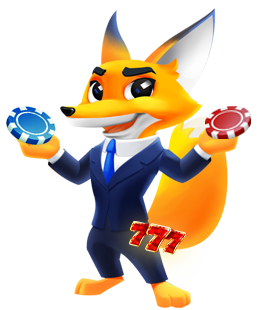Blackjack Ace Rules: Simple Guide to Using the Ace in Blackjack
In blackjack, the Ace is one of the most powerful and adjustable cards you can have. Its unique ability to be counted as either 1 or 11 makes it an essential card for building strong hands. The value of the Ace depends entirely on what benefits your hand the most at any given moment.
Let me explain how blackjack Ace rules work, especially if you are just starting to learn blackjack. This guide will help you understand the role of the Ace in blackjack, the difference between hard and soft hands and how to develop smart strategies when playing with an Ace.
Blackjack Ace Rules: The Role and Power of the Ace Card
The Ace gives you more choices during the game. For example, if you have an Ace and a 7, your total can be 8 or 18, so you can adjust based on your next card. This is why the Ace is often called the "strongest card" since it helps you avoid going over 21 while staying close to it. In many situations, an Ace can save your hand or turn a losing one into a winner.
This special flexibility is what makes the Ace stand out and why you love to see it in your hand!

The Ace in blackjack can be counted as 11 or 1, depending on the situation such as:
- Soft Hand: Here, the Ace is counted as 11, and you cannot bust. For example: Ace + 6 = 17 (called soft 17). This hand is flexible and often ideal for taking another card (hit) or doubling down to try and win more.
- Hard Hand: In this case, the Ace is counted as 1 to avoid busting. For example: If you have Ace + 6 + 10, the Ace must be 1 to keep the total at 17.
How to Play with the Ace: Basic Situations and Easy Tips
In blackjack, the Ace card holds a unique role since its value can be flexible, depending on what benefits the player's hand most. Let’s look at common situations and simple advice for playing it:
Handling Soft Hands (Ace counted as 11)
When you play Blackjack, how you handle soft hands depends on the value of your cards and the dealer's face-up card. Let’s look at some simple situations:
- The dealer has a weak card (3 - 6): It’s very great to stand and stop drawing cards. The dealer is likely to bust, so there’s no need to take any risks. And it’s also a great time to double down if you have a hand like Soft 16 - 18.
- The dealer has a strong card (9, 10 or Ace): You should hit and draw another card since need a stronger hand to compete with the dealer's potential total. Especially when you have Soft 17 or lower, it’s usually better to try to get closer to 21.
- If you have a Soft 13 or Soft 14 (for example, Ace or 2 to Ace + 3): These hands are so far from 21 and hitting is the best idea. Don’t worry about busting because your Ace can always switch from 11 to 1 to keep your hand safe. So, this increases your bet and gives you a chance to win more money if you draw good cards.
Note: If you want to make better choices, avoid risks and take advantage of chances to win when the dealer is in a weak or strong spot, dive into our guide on blackjack basic strategy and learn how to make the smartest moves for every hand!
Handling Hard Hands (Ace counted as 1)
If you have a hard hand, the Ace card value in blackjack counts as 1 to avoid going over 21. These hands are less flexible than soft hands, so your decisions need to be more precise. Here’s how to handle them:
- You have a low total (12 to 16):
- If the dealer shows a weak card (like 4 to 6), it’s usually best to stand, as the dealer has a higher chance of busting.
- You should hit to improve your total when the dealer shows a strong card (like 7 to 10 or Ace).
- You have a medium total (17 or 18): Hard 17 and Hard 18 are considered a strong hand, so it’s usually better to stand, regardless of the dealer’s card.
- You have a high total (19 to 21): These are winning hands in most situations, so you should always stand
It’s also essential to note that you should never double down with a hard hand, because you don't have the same flexibility and the risk is higher if you draw a high card.
Similarly, while splitting Aces is often a good strategy to create two new hands, keep in mind the limitation that you cannot draw additional cards for each hand after the split.

When the Dealer Has an Ace: How to Adjust Your Strategy
The dealer's Ace is a powerful card and the rules around it can affect how you play. Here's how the dealer handles the Ace and how it impacts your strategy:
How the Dealer Uses the Ace
The "Soft 17" rule applies when the dealer has a blackjack Ace card counted as 11 and their total value is 17 (e.g., Ace + 6). In some casinos, the dealer must hit on a Soft 17, which increases their advantage because they have the potential to improve their hand to a stronger total like 18, 19, or 20.
When the dealer shows an Ace, you need to play more cautiously because the dealer is more likely to have a strong hand. This is why you should always change your strategy, possibly hitting to improve your hand or standing if you already have a strong total. In general, the dealer having an Ace makes it harder to win.

What You Should Do When The Dealer Shows an Ace
When the dealer shows an Ace card blackjack, this means they have a powerful chance of getting a good hand. So, here’s what you should consider:
- With your strong hand (like 17 or higher), it’s usually best to stand because you already have a decent chance of winning.
- If your total is 12 - 16 regardless of whether you have a soft or hard hand, you should consider hitting. The dealer’s Ace increases the likelihood that they will have a strong hand and you need to improve yours.
- If your total is Soft 13 - 18, you might consider hitting to improve your hand, especially if the dealer’s upcard is an Ace. However, if you have a Soft 18 or higher, it’s often safer to stand.
- You can consider taking Insurance if the probability of the dealer having a blackjack is high. But, you should avoid this side bet when the dealer's upcard is weak.
- When the dealer has two Aces in blackjack, they cannot split their hand, which reduces their ability to create multiple strong hands. So this lessens the pressure on you as a player.
When the dealer has a blackjack (Ace + 10-point card), the situation changes and you need to understand how the payout works. If the dealer has blackjack, they automatically win and you lose your bet. But if you also have a blackjack, the round is a push, meaning you tie with the dealer and your bet is returned.
So, it’s a good idea to be extra careful with your hand since the payout rules are much more favorable to the dealer in this case.

Blackjack Split Aces Rules at Casinos
This hand gives you the chance to turn one strong hand into two separate hands, each with the potential to win. It is actually a good idea to split Aces when possible because this creates two opportunities to get a blackjack. However, there are some special Aces blackjack rules to keep in mind:
- In some casinos, you are only allowed to draw one card after splitting Aces.
- Other casinos may allow you to resplit Aces, but typically only once.
- When you split Aces, the dealer will always count the first Ace as 11 and the second Ace as 1, which helps to prevent you from busting.
- If you draw a 10-value card (e.g., 10, Jack, Queen, or King) after splitting Aces, your hand will be counted as 21 points, but it will not be considered a natural Blackjack. This distinction matters because natural Blackjack usually pays out at a 3:2 ratio, whereas a hand totaling 21 after splitting Aces typically pays out at 1:1.
Important Note: When you are dealt two Aces, you should always choose to split them. So you create two new hands, each starting with an Ace. This gives you two chances to hit Blackjack (21) and win bigger.

Advanced Blackjack Aces Strategy
When you have three or more cards with an Ace, the Ace can be counted as either 1 or 11 points. For example, if you have an Ace + 4 + 5 = 20, you don’t need to worry about busting if you draw another card. So, with a soft 20, the best strategy is to stand because you already have a strong hand.
Or if you play online, a great way to optimize your strategy is by using a Basic Strategy Chart. This helps you determine how to handle an Ace in different situations. For example, it will guide you on when to split, hit or stand for the best results. By following these charts, you can increase your chances of winning and minimize risks.
Here’s a helpful reference table to guide you in making the best decisions when playing Aces in blackjack:

Conclusion
Blackjack comes in different versions, but one thing is always the same: the Ace rules in blackjack are very important. This card can help you win by giving you a strong hand, or it can save you from going to bust. To use it effectively, you should always split Aces and avoid taking insurance unless the dealer has a very high chance of having a blackjack. Additionally, make sure to choose tables with favorable rules to boost your odds of success.
I hope this guide helps you understand how to use the Ace in blackjack and how it can help you play better. You can also check out more of our posts to learn about other fun casino games!
















